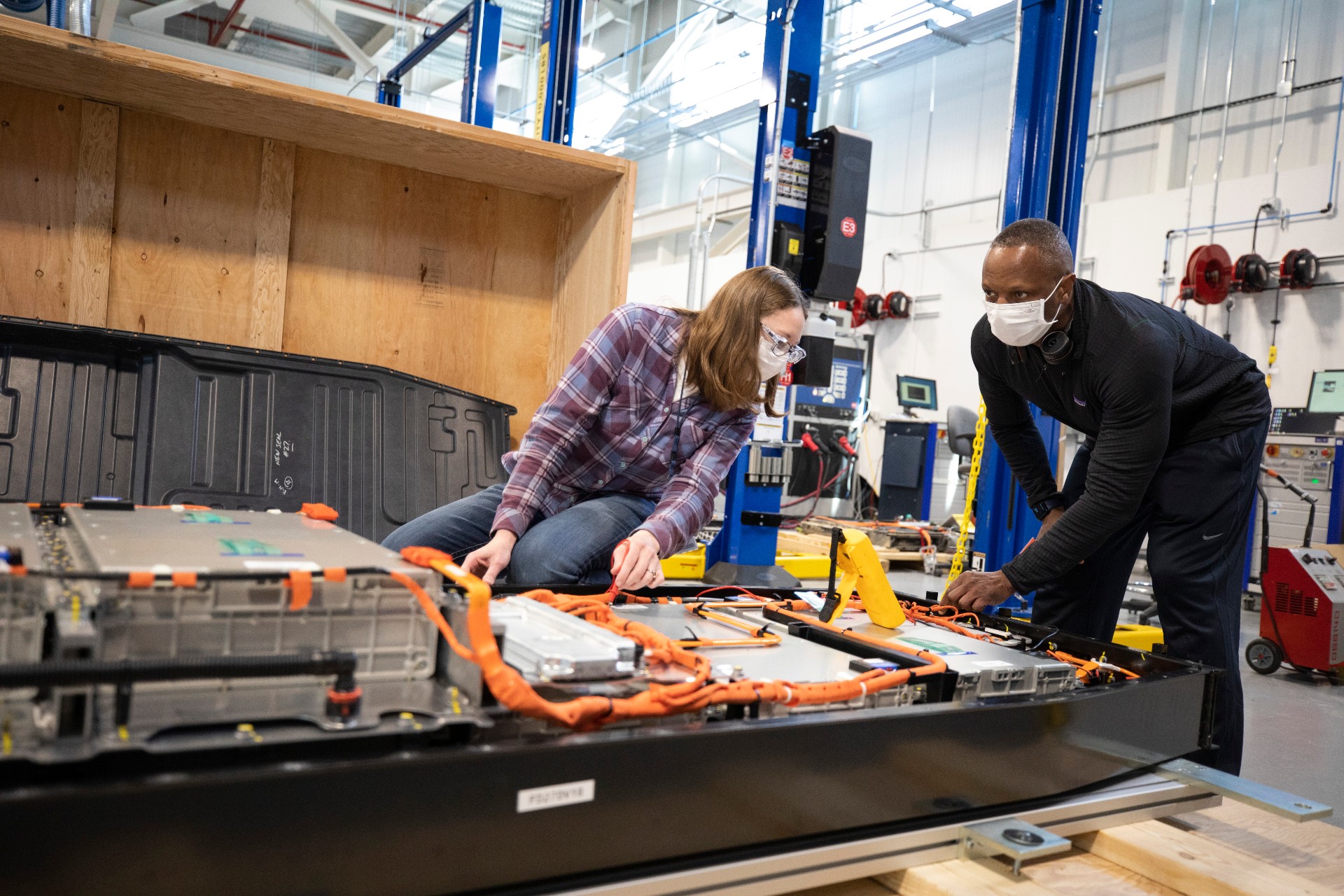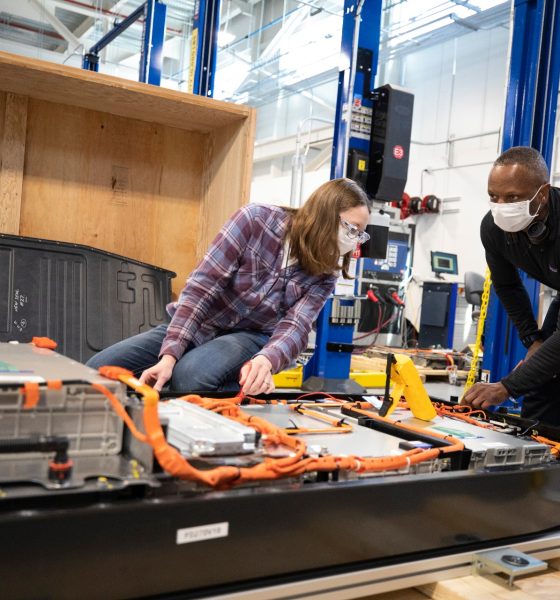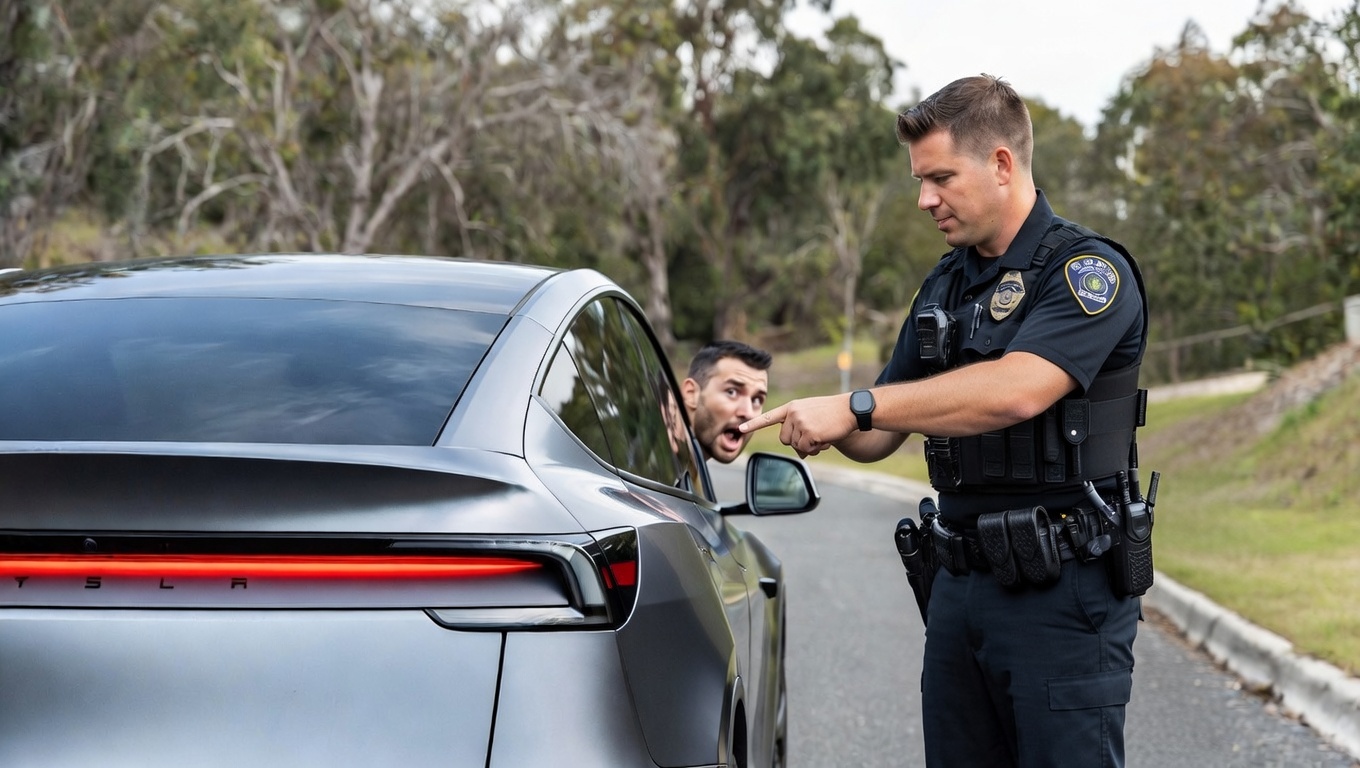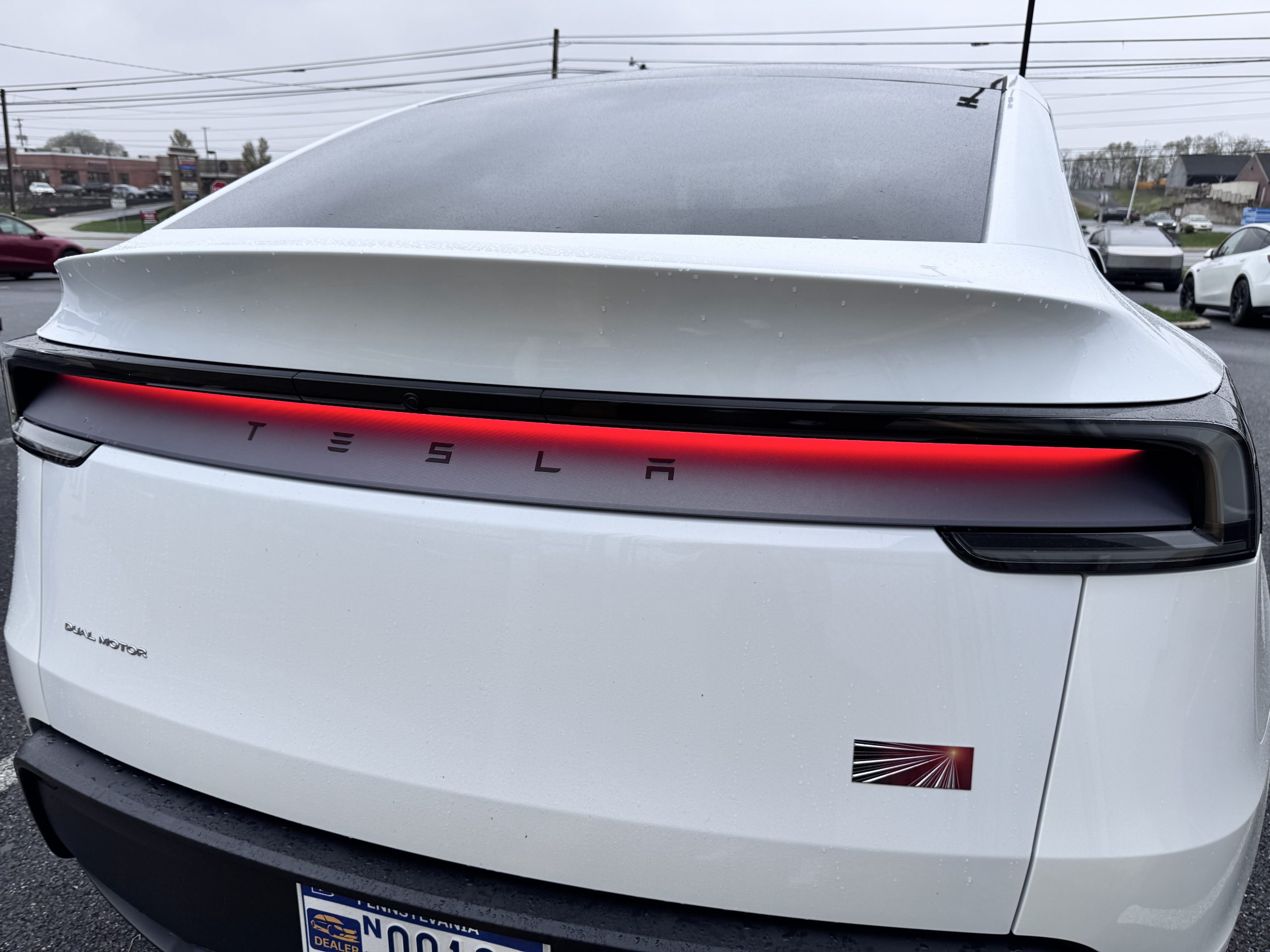

News
Ford signs joint venture with SK Innovation, backtracking its ‘no advantage’ battery stance
Ford has announced that it has signed a joint venture deal with South Korea’s SK Innovation in a monumental partnership that will manufacture EV battery cells in the United States. The announcement shows Ford has backtracked on its previous stance of manufacturing batteries in-house, after the company’s previous CEO Jim Hackett said there is “no advantage” to automakers building cells themselves.
Last night, Ford unveiled its F-150 Lightning pickup truck, an all-electric version of its highly-popular F-150 pickup that has dominated the U.S. truck market for years. Ford recently entered the electric vehicle sector with its Mustang Mach-E, a crossover that holds the legendary name of the muscle car that is synonymous with performance and aesthetics. Along with the Mustang Mach-E, Ford has unveiled the e-Transit van, an all-electric take on its chassis cab cargo van, and of course, the F-150 Lightning, which had its very public unveiling last night.
Now, Ford is making moves to increase battery cell supplies for its transition to electrification by entering a joint venture with SK Innovation. The venture will be called BlueOvalSK, and it was first reported by Reuters.
On the heels of a speech from President Joe Biden on Tuesday that outlined the importance of transitioning to electrification to not only fuel carbon neutralization efforts but also for secure American, unionized jobs, Ford is now taking extra steps to secure extra manufacturing jobs in its home country while aiming to avoid battery cell shortages.
Ford CEO Jim Farley told reporters on Wednesday night that “As the industry changes, we have to insource now.” Cells are the most important and most expensive portion of an electric car. A key way to reduce costs and remain more competitive in the EV sector is to produce cells through a partnership with suppliers or with a wholly-owned facility. Tesla does both, as the company purchases cells from LG Chem and CATL, and through a partnership with Panasonic at its Gigafactory Nevada site. Additionally, Tesla produces its own 4680 cells at the Kato Road facility in Northern California. These cells have yet to be installed into vehicles, but will be in the future and will decrease battery costs while increasing power, range, and efficiency.
Farley believes that the partnership will help avoid battery constraints for its vehicles, an issue that has plagued the automotive sector this year, except with semiconductors.
Interestingly, it is a major backtrack from what Ford’s former stance on battery production was. Last year, then-Ford CEO Jim Hackett commented on Tesla’s strategy to produce its own cells, stating it had “no advantage.”
Hackett said:
“I’ve met with a number of the people that you know that are in the supply side of this. And it was our estimation, in fact, our whole team went through a really deep dive on this six months ago, that the supply chain has ramped up since Elon built his Gigafactory. And so there’s plenty there that does not warrant us to migrate our capital into owning our own factory. There’s no advantage in the ownership in terms of cost or sourcing as what Ford can draw on.”
After Farley took the helm at Ford on October 1, 2020, he seemed to indicate that things were heading in a different direction than Hackett indicated. “Absolutely, we’re discussing it as a team,” when asked about Ford’s potential to produce its own cells.
Ford’s F-150 Lightning will start from $39,974 to $90,474 and will offer up to 300 miles of range with its extended range battery.
Ford F-150 Lightning unveiled: Price, Release date, Range, Features and more
What do you think? Let us know in the comments below, or you can email me at joey@teslarati.com or Tweet me @KlenderJoey.

News
Tesla launches hiring for Robotaxi program in its twentieth country
Overall, the hiring signals Tesla’s aggressive timeline for global dominance in autonomous mobility.

Tesla has launched a hiring initiative for its Robotaxi program in its twentieth country, as the company posted two new jobs in Thailand this week.
Tesla is hiring in Bangkok and Kowloon for the Vehicle Operator position, which is related to data collection, and is the first in Thailand, but the twentieth country overall, as the company tries to expand into other markets.
🚨 BREAKING: Tesla is hiring additional full-time Vehicle Operators in Bangkok, Thailand.
Previous openings were 6-month, part-time roles. These are equivalent to AI Safety Operator roles in the U.S. pic.twitter.com/R6LzoU1bos— Tesla Yoda (@teslayoda) January 5, 2026
Tesla has had active job postings for Vehicle Operator positions in the United States, India, Israel, Taiwan, Germany, the Czech Republic, Hungary, the UK, Finland, Switzerland, Sweden, the Netherlands, Austria, Spain, Norway, Italy, and Turkey in past listings.
These postings are not all currently available, likely because the roles have been filled.
Thailand is the most recent, and broadens the company’s potential path to expanding its ride-hailing program, which is only active in the United States in Austin, Texas, and the California Bay Area, so far.
These roles typically involve data collection, which assists in improving Autopilot and Full Self-Driving operation. Tesla’s self-driving programs utilize real-world data that is accumulated and stored, observing vehicle and traffic behavior, as well as tendencies that are performed by human drivers to help increase safety and overall performance.
Overall, the hiring signals Tesla’s aggressive timeline for global dominance in autonomous mobility. Although the company has several high-profile rivals and competitors in the field, it has established itself as a main player and a leader in the development of autonomous technology, especially in the U.S., as its FSD suite is refined on almost a weekly basis.
The Full Self-Driving suite is available in seven countries and territories currently, including the U.S., Canada, China, Mexico, Puerto Rico, Australia, and New Zealand. Its biggest goal for expansion is currently the European market, where regulatory hurdles have been the main bottleneck prolonging its launch on the continent.
Tesla has performed months of testing in various European countries, including France and Spain, and does have support in some areas from various regulatory agencies. However, the company is hoping to get through this red tape and offer its suite in Europe for the first time, hopefully this year.
News
Tesla China rolls out Model Y upgrades, launches low-interest financing
These strategies are aimed at improving the ownership experience and keeping vehicle pricing competitive in the world’s largest electric vehicle market.

Tesla has rolled out minor updates to the five-seat Model Y in China, upgrading the vehicle’s center display to a higher-resolution 16-inch 2K screen. The electric vehicle maker also introduced attractive financing options, including 7-year low-interest rates, to offset the new purchase tax on EVs.
These strategies are aimed at improving the ownership experience and keeping vehicle pricing competitive in the world’s largest electric vehicle market.
Five-seat Model Y gets larger, better display
With its recent update, all three variants of the five-seat Model Y now feature an upgraded 16-inch 2K resolution center display, which replaces the vehicle’s previous 15.4-inch 1080p panel. This screen was already used in the six-seat Model Y L, and it offered improved visual clarity. Tesla China has also updated the Model Y’s headliner to black, giving the vehicle a sleeker appearance.
Prices of the five-seat Model Y remain unchanged at RMB 263,500, RMB 288,500, and RMB 313,500 for the respective trims. This update enhances the cabin experience as domestic rivals are already adopting high-resolution screens. As noted in a CNEV Post report, some domestic automakers have begun rolling out vehicles equipped with 3K-resolution displays.
New financing offers
Tesla also launched ultra-long-term financing offers for its locally produced models in China, which include the Model 3 sedan, the five-seat Model Y, and the six-seat Model Y L, through January 31, 2026. The 7-year option features an annualized fee rate as low as 0.5%, which is equivalent to 0.98% interest. This is expected to save customers up to RMB 33,479 ($4,790) compared to standard rates.
A 5-year zero-interest plan is also available, and it has been extended to the Tesla Model Y L for the first time. These incentives help offset China’s new 5% purchase tax on New Energy Vehicles (NEVs) in 2026-2027. Some of Tesla’s rivals in China have announced in recent months that they would be covering the purchase tax owed by buyers early this year.
News
Tesla Model Y’s new feature lands driver in hot water from police officer
“He gave me a warning and told me to get it fixed.”

Tesla Model Y received a slew of both interior and exterior upgrades when the company refreshed its best-selling vehicle last year.
However, one of the more notable changes from an exterior perspective landed a driver in hot water with a local police officer, who was confused about the situation with the taillight bar and its ability to alert other drivers of a reduction in speed.

The new Tesla Model Y taillight with taillight glow
A Tesla Model Y owner in Indiana recently noted in a Facebook post that he was pulled over because a police officer thought the vehicle’s taillights were not turned on. However, the Model Y’s new rear light bar, which spans across the entire width of the vehicle, is more than visible in both light and dark conditions.
The incident, which was first spotted by Tesla Oracle, brings to light the interesting changes and perception of vehicle design that Tesla has brought forth with the new Model Y. We know some things might be head-scratching to some drivers, notably the Matrix Headlight technology present on the car, but this one truly baffled us.
The post stated:
“Just got pulled over for my tail lights not being “on” i told the officer it’s brand new. It has 1100 miles. I told him the red light bar is the taillight. The brake lights, both turn signals, and the red bar was on/worked. He told me that where the brake lights are, it should be illuminated there also. He gave me a warning and told me to get it fixed. Had anyone else had this kind of issue?”
Having the police officer tell a driver to “get it fixed” when it is a completely legal and functional design is pretty crazy.
However, the rear taillight bar, which glows and really gives the new Model Y a distinct difference between its previous iteration, is more than recognizable as a brake light and an indication of a reduction in speed.
Regulatory language for vehicle designs indicates that the light has to reach a certain number of lumens, or brightness. Lars Moravy indicated this on an episode of Jay Leno’s Garage when he and Tesla Chief Designer Franz von Holzhausen explained some of the details of the new Model Y.
This issue sparks some interesting dialogue people can have about vehicle design, and as more and more companies are adopting these futuristic looks, it seems law enforcement will have to get with the times and familiarize themselves with the regulations regarding exterior lights.








